One of my favorite types of tanks is nanos with predatory fish. In a small water volume, it’s easy to manage the high nutrients that come naturally with keeping more predatory fish due to their metabolism and food source. Nanos also allow aquarists to highlight a single or small group of specimens in an intimate way that larger tanks simply don’t afford. In this article, I’ll break down some of my favorite predatory fish that can be kept in tanks of 50 gallons (or less for some).
1. Pygmy Wasp Fish, Paracentropogon zonatus
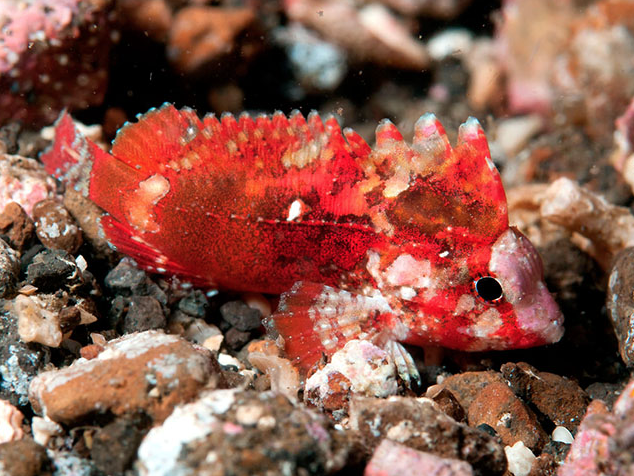
Also known as the “Red Rooster Waspfish,” this small species gets to around 3 inches and can happily live in a 10-30 gallon system. This species is a member of the scorpionfish family and is venomous; therefore, it’s important to respect them. They can be kept together in small groups. They will readily take live food, but there are instances where people can wean them onto prepared foods successfully. Due to their small size, some people even have success keeping them alive primarily on the amphipod population in their systems. They are poor swimmers and do best in a low-flow system with lots of rock work to hide and perch on. They are also sensitive to any chemicals, such as copper; thus, they can be challenging to quarantine. Due to their small size, this species could be kept with other peaceful fish as long as they are adequately fed. As with all fish that will sometimes only eat live food, it’s important to keep their diet varied to ensure they’re getting proper nutrition.
2. Dwarf Lionfish, Dendrochirus spp.
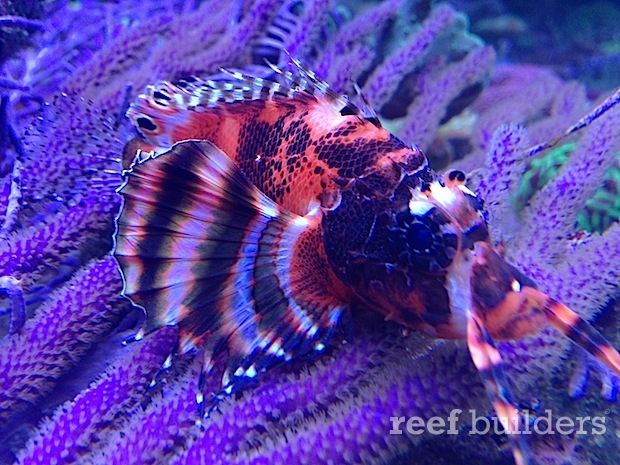
Dwarf lions such as Fuzzy Dwarf or Fu Manchu can typically be kept happy in systems around 50 gallons and up. They have the behavior and personality of the larger species of lions but stay much smaller, maxing out around 4-7 inches depending on the species. They typically have far brighter and more impressive colors than many of the larger lion species. Compared to other species on this list, these fish can easily be weened onto prepared food. It’s best to keep them with large tank mates who they cannot fit in their mouths.
3. Coral Crouchers, Caracanthus spp.
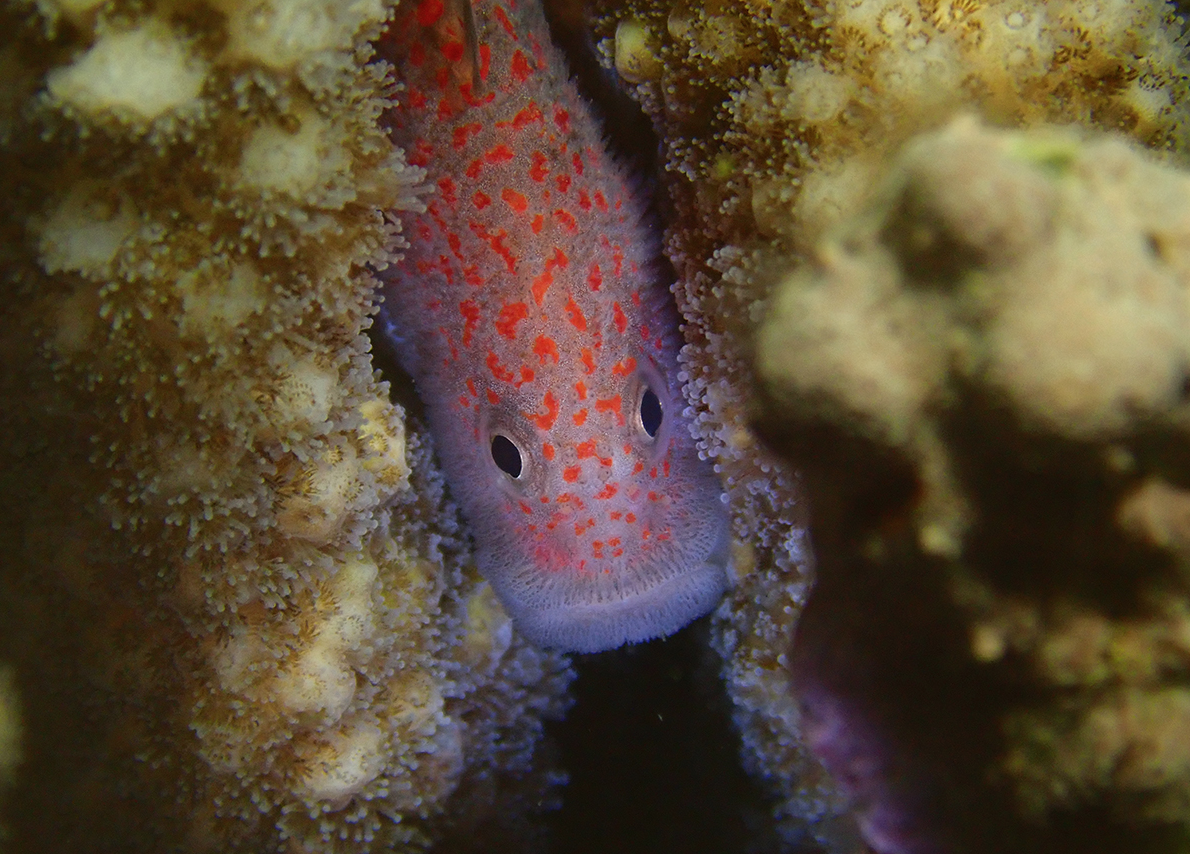
Often, these fish are referred to as “gumdrop gobies” or “coral crouchers” in the trade. They are technically scorpionfish since they belong to the family Scorpaenidae. They are very small and grow to a maximum size of 2 inches. They are ambush predators and display similar behaviors to anglers and frogfish, preferring to wait in one spot and catch any food that drifts by them. This species would benefit from branching SPS corals in their system as they are typically found living in branching stony corals. Due to how slow they are, they also almost exclusively need to be target-fed as they will not go out of their way to catch food.
4. Wartskin Frogfish, Antennarius maculatus
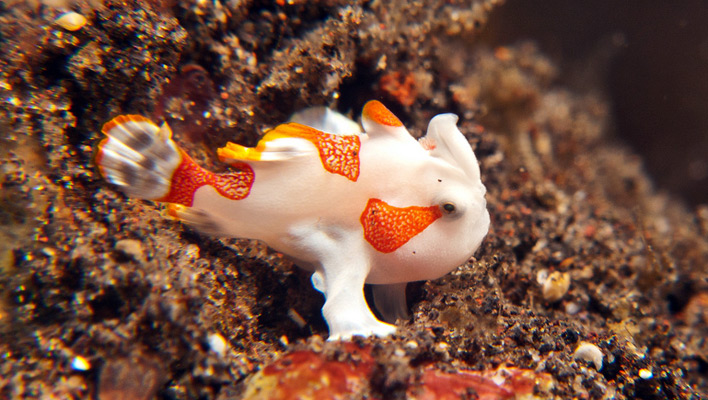
These frogfish remain small, reaching around 4 inches max, and often are bright in coloration. They make for exciting animals to keep as they slowly “walk” across the tank with their modified pectoral fins that resemble small hands. Occasionally, they mount themselves in one spot and slowly waggle their “angler” back and forth to attract potential prey. These species typically only eat live food and will benefit from prey such as gut-loaded ghost shrimp. Be sure to keep this species alone as they will attempt to eat anything that can fit in their mouth (or that they think can fit in their mouth!).
5. Leaf Scorpionfish, Taenianotus triacanthus
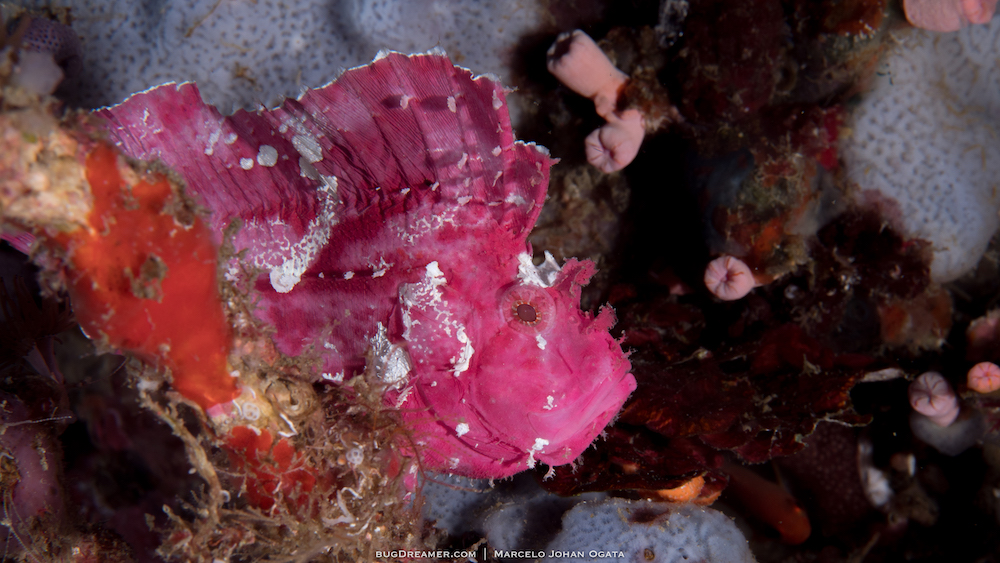
This species has an exaggerated dorsal fin, making its overall body plan resemble a leaf. They use this to attract prey by appearing like a flowing leaf. This species will reach around 4 inches. They can be kept in a 30-gallon aquarium. They can be housed with fish that will not nip at them or are small enough to fit in their mouths. Occasionally, they shed their outer skin, like other species of scorpionfish. This species can sometimes shift color in a system depending on its environment.
6. Hawkfish, Cirrhitichthys, Cirrhitops, Neocirrhites and Oxycirrhites spp.
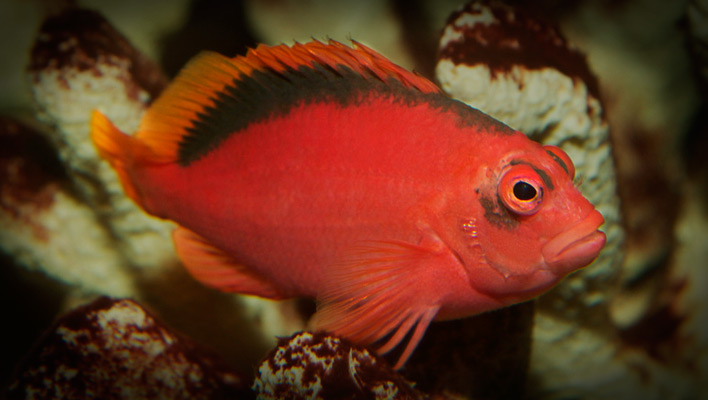
Many species of hawkfish can be kept in smaller systems such as flame, longnose, arc eye, and banded hawks. These have a robust, bossy personality and can often be aggressive to other inhabitants. Once they are large enough, they will readily go after live food such as ghost shrimp. They are often active and displayed in the system, swimming from rock to rock perch. Most of these species can be kept in a 30–50-gallon aquarium. They make for an excellent addition to any more minor system focused on predatory fish as they add a pop of color and personality and, most importantly, can hold their own.
7. Tobies, Canthigaster spp. pufferfish

These puffers stay relatively small, allowing them to thrive in nano systems. “Blue Dot Toby” and “Valentini” puffers have fun personalities, look visually stunning, and satisfy the puffer urge that so many without large systems have. Typically, species in this genus get to around 4” and can do well in a 30-gallon aquarium. They play nice with most tank mates but nip at long fins or polyps. They are known to eat coral at times, so it may be best to include them in a system with fast-growing, hardy, softy corals if you are to include them in a reef. As with all puffers, it’s essential to supplement their diet with something “hard” to keep their beak trimmed.
8. Yellowspotted Scorpionfish, Sebastapistes cyanostigma

This attractive red and yellow species will reach sizes of 3-4 inches. It does best in aquariums of at least 30 gallons and is often found in reefs in Australia. It can be kept in pairs or with fish larger than it can eat. It is an ambush predator and generally prefers live food. In captivity, it has been known to live for up to a decade.
9. Snowflake Moray Eel, Echidna nebulosa
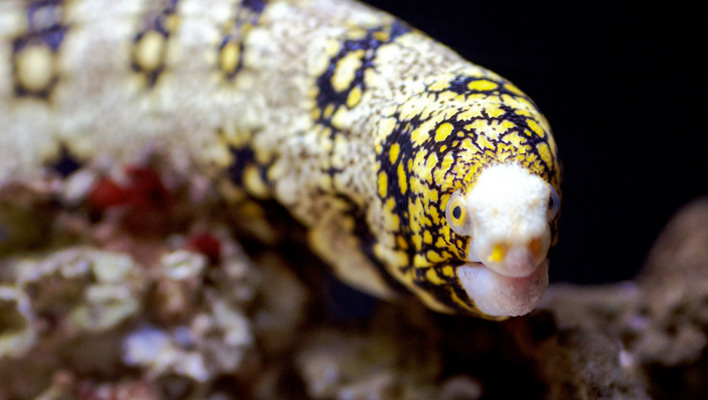
Snowflake morays are a paramount classic for most people who begin to keep eels in home aquaria. They are extremely hardy and easy to care for, and they provide ample entertainment with their goofy personalities during feeding time. Due to their poor eyesight, they can be quite enjoyable to feed with a pair of tongs, and it makes for a great show when guests are over! My small moray is typically the center of attention whenever anyone comes to my apartment, and for good reason – if comfortable in their environment, they’re typically relatively active and out in the open. They will often find a central cave or crevice to call home; thus, it’s important to have expansive rock work to feel comfortable. Some opt for PVC systems to construct tunnel systems they can easily hide in their scape – this also has the added benefit of making the exits in areas easily observed. Most morays can be acclimated to prepared food, but they certainly occasionally enjoy a live treat. They can reach up to three feet and will, at a minimum, need a 50-gallon aquarium, although they would likely be happier in a larger one. Having a tight-fitting lid with all eels is essential, as they can often be escape artists.
10. Orange-banded stingfish, Choridactylus multibarbus
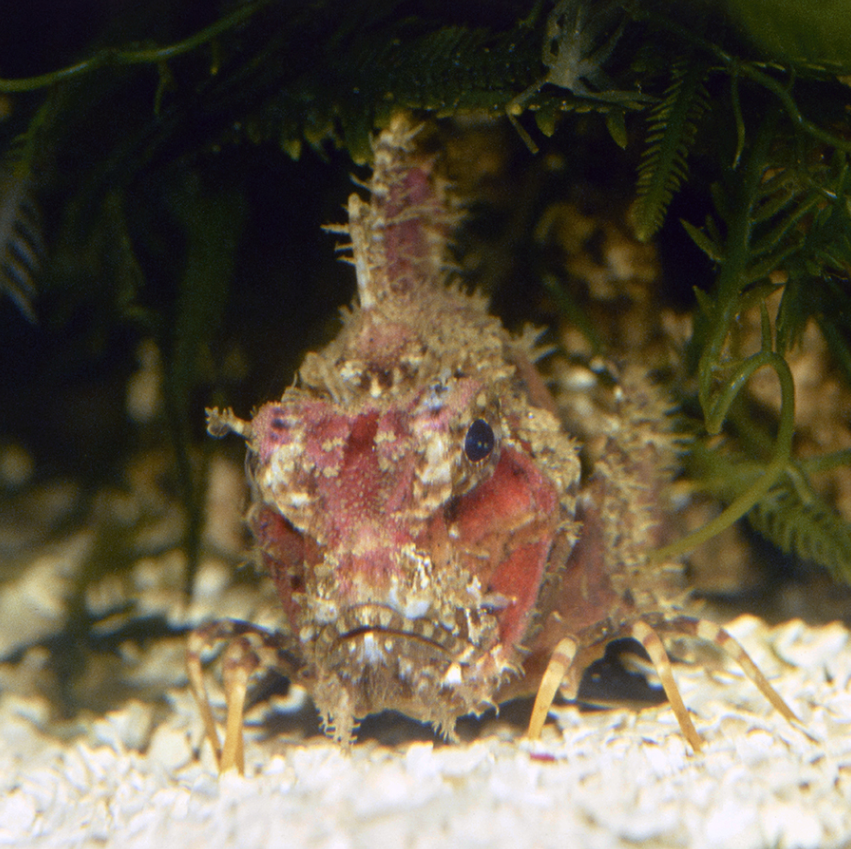
My favorite species on this list is the rarely imported “breaded ghoul” or orange-banded stingfish. This species has hyper-differentiated pectoral rays, which have evolved to act like tiny legs. It uses these “crawl” along the substrate. It also uses them to search for prey by feeling around for it both on and beneath the surface of the sand. This Lovecraftian horror of a fish is like if a crab met a fish, met a rock. It’s venomous, eats anything in front of it, and has excellent coloration. This species is best kept alone as it can eat anything that fits in its mouth (and anything else that would distract from its oddity). A species this cool deserves the spotlight!


